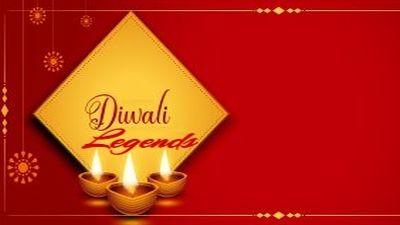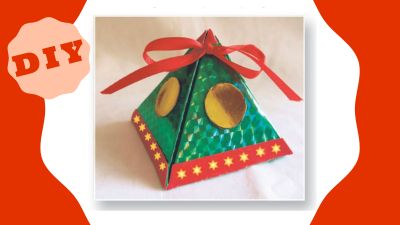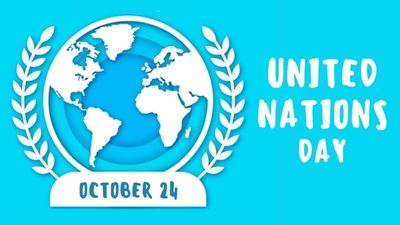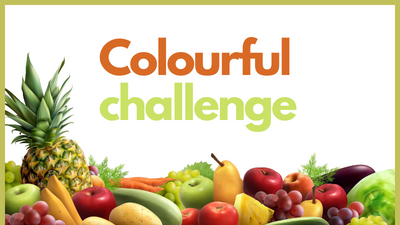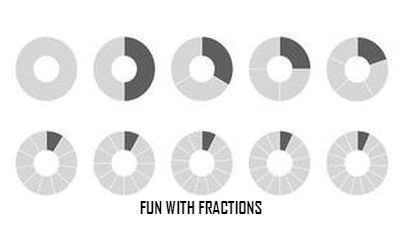Part #14: May your Diwali turn out to be as exciting as Hanuman’s day … with loads of tasty snacks and the rockets he is able to make at home, thanks to Nala.
Nala and Hanuman are playing in the garden, while Hanuman’s mother Anjana prepares snacks, including Hanuman’s favourite vada and puttu (steamed rice cake), for them. Hanuman gets excited when he hears the cooker whistle.
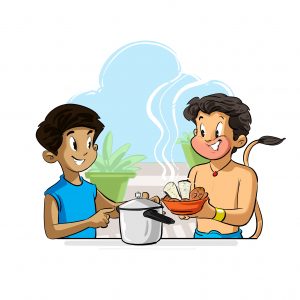
Hanuman: Hey, Nala! Did you hear that yummy sound?
Nala: Ha ha! Yes. Did you know that’s the world’s first rocket?
Hanuman: The cooker is world’s first rocket?
Nala: Not exactly; but, technically, yes.
Hanuman: Let me get some snacks and then you can tell me in detail…
Hanuman brings back a plate full of dishes and the cooker as well.
Hanuman: Is this really the world’s first rocket?
Nala: Something similar to this. It’s called the wooden pigeon and was invented by Archytas in 400 BC.
Hanuman: Tell me more!
Nala: It is based on Newton’s Third Law of Motion: every action has an equal and opposite reaction. The pressure that builds up inside the cooker pushes against the top and moves it up.
Hanuman: Just like how it pushes the cooker’s pressure regulator, or what mom calls the ‘weight’!
Nala: That’s right.
Hanuman: Can we try building one? But mom may not allow it as it involves fire.
Nala: Don’t worry. We can build similar rockets using the principle of air pressure without fire.
*********************************************
BALLOON ROCKET
Step 1: Cut the balloon’s neck using scissors so that it will be easy to tape
Step 2: Insert 1 or 2 straws inside the balloon
Step 3: Tape the inserted straws and make sure air doesn’t leak in the taped part.
Step 4: The balloon rocket is ready for launch. Blow into the straw and let it go. You will see the balloon moving high up like a rocket.
*********************************************
Hanuman: What will happen to the rocket’s movement if we bend the straw?
Nala: That will give you the world’s second rocket technology called “Aeolipile” or Hero’s Engine.
Hanuman: Really? Can you tell me more?
Nala: It was invented by a scientist called Heron of Alexandria. People started calling it as Hero’s engine. Did you know it is also the basic technology behind steam engines?
Hanuman: Wow! I am going to replace regular straws with bendable straws.
Hanuman bends the ends and blows into the balloon. When he releases it, it spins instead of travelling straight!
Nala: The principle behind this is the Newton’s Third Law again. The balloon produces an action by squeezing the air inside causing it to rush out of the straw. The air travelling around the bend in the straw, exerts a reaction force at a right angle to the straw. This force causes the balloon rocket to spin.
Hanuman: Amazing!
Hanuman plays with it for a few times
Hanuman: Nala, is there a way to build a super fast rocket without mom worrying about our safety?
Nala: How about we use some ingredients from the kitchen to power our rocket then?
Hanuman: Really? We can do that?
Nala: Yes. But first please ask your mother’s permission and also ask her to supervise. Then, let’s move to an open space because this experiment will be messy and the rocket will shoot up.
*********************************************
SODA ROCKET
Materials required:
Plastic bottle (500 ml)
Vinegar or lemon juice
Baking soda 1 tbsp
Cork that fits into the bottle’s mouth
Cardboard sheet
The author is the founder and CEO of Vaayusastra Aerospace, an IIT-Madras incubated ed-tech startup that offers Air Science workshops for children between five and 14 years.
